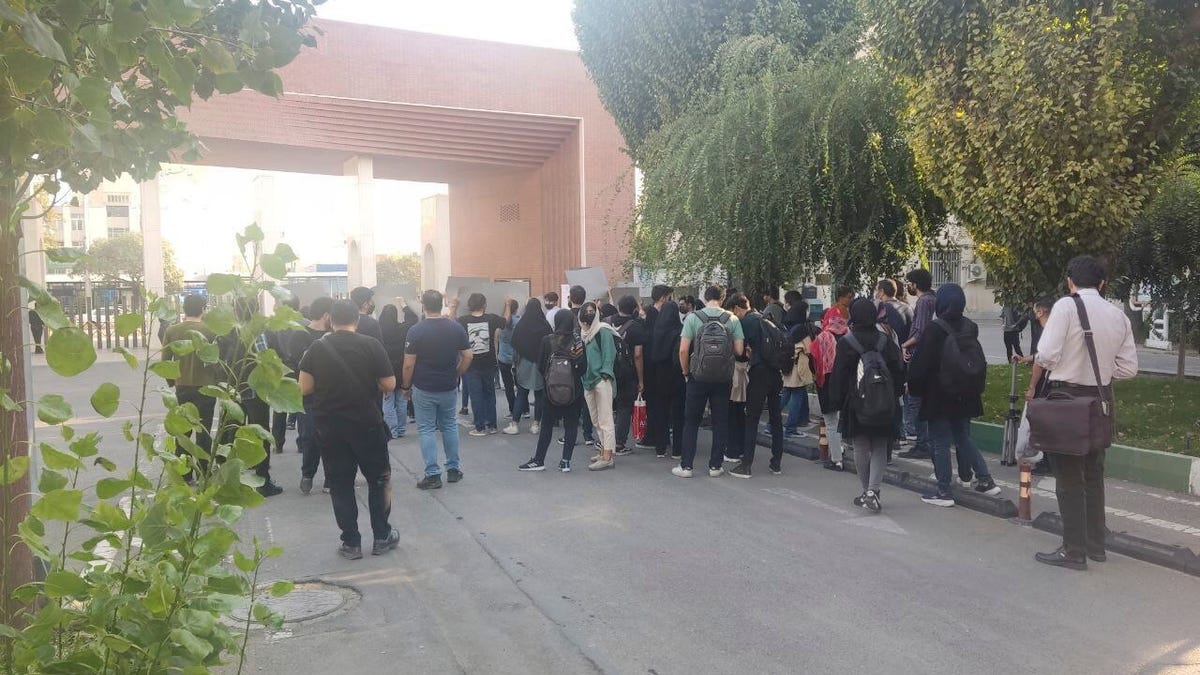NEWYou can now listen to Fox News articles!
As Israeli airstrikes pounded Tehran this week—including a direct hit on Iran’s state television headquarters—residents in the capital described a city gripped by fear and confusion.
In exclusive comments to Fox News Digital, an independent journalist based in Tehran, who withheld their name for fear of reprisal, said, “I hate the Islamic Republic, but my country is under attack. Our house was shaking from the blasts and missiles an hour ago while I was in the newsroom covering the news. We are in a war zone.”
According to the journalist, the Israeli strike on the Islamic Republic of Iran Broadcasting (IRIB) compound hit hard—physically and symbolically.
ISRAEL-IRAN WAR PROMPTS TRUMP TO LEAVE G7 SUMMIT EARLY

Waving Iran flag above skyline of Tehran at sunset. (iStock)
“The studio that was bombed yesterday is part of the regime’s state broadcaster, a mouthpiece for propaganda that has never represented the people. For years, we imagined the fall of IRIB as the final chapter in the collapse of the Islamic Republic. But yesterday, for a few minutes, we were all in shock,” they said. “Ordinary people don’t watch the regime’s TV, but the attack on it felt strangely symbolic—like the world was shifting.”
Another independent Iranian journalist ironically added, “I’ve watched the video of the TV station being bombed while on air over and over again, and couldn’t stop laughing.”

A missile struck the Islamic Republic of Iran News Network (IRINN) during a live broadcast showing destruction of the studio and the reporter escaping to safety. (Jaap Arriens/NurPhoto via Getty Images)
Despite the chaos, journalists like them are still trying to report. “We don’t know the exact number of casualties, and even the government numbers aren’t trustworthy. We can’t access the attack sites—security forces push us away. And the crackdown on reporters has only gotten worse.”
Internet access has been largely severed. “Most of the time, the internet doesn’t work at all,” they added. “But we try to keep going.”
Another Tehran resident told Fox News Digital they only learned about the scale of the attacks after briefly regaining internet access. “I was hiding during the bombing. I had no idea what was happening. Has the U.S. intervened? Is this going to continue?” they asked.
INSIDE ISRAEL’S SECRET WAR IN IRAN: MOSSAD COMMANDOS, HIDDEN DRONES AND THE STRIKE THAT STUNNED TEHRAN

People gather in the street in the aftermath of Israeli strikes, in Tehran, Iran, Jun.13, 2025. (West Asia News Agency via REUTERS)
The confusion comes as Washington debates whether to join the conflict militarily or pursue a diplomatic resolution with Tehran. Some in the Trump administration reportedly favor a deal to avoid further escalation, while others advocate for a more forceful stance.
Meanwhile, President Trump’s message was seemingly seen by Iranians when he urged civilians to evacuate Tehran. On Truth Social yesterday, “IRAN CANNOT HAVE A NUCLEAR WEAPON. I said it over and over again! Everyone should immediately evacuate Tehran!”
The result was reportedly swift, resulting in a mass exodus from the capital. “People are terrified,” said a resident of Tehran. “They’re locking their doors and fleeing the city. Roads are packed. But for those of us who stay—it’s not easy either. All night, we hear missiles, bombings, explosions.”
” I don’t want to leave my home. But yes—I’m scared,” they added.

FILE. Iranians rose up in 2022 against the regime. In this photo taken by an individual not employed by the Associated Press and obtained by the AP outside Iran shows students of the Sharif University of Technology attend a protest sparked by the death of 22-year-old Mahsa Amini in the custody of the country’s morality police, in Tehran, Friday, Oct. 7, 2022. (AP Photo)
CLICK HERE TO GET THE FOX NEWS APP
They also responded to Israeli Prime Minister Benjamin Netanyahu, who on Monday urged Iranians to rise up, saying, “No one thought the Assad regime would fall, but it did.”
“You’re bombing a city of ten million and telling people to rise up?” adding, “When people are under fire, they don’t start a revolution—they take shelter or flee.”

